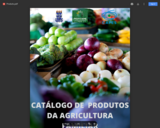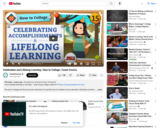
CashOnHand - Glossary - Billy - English
- Subject:
- Business and Communication
- Education
- Finance
- Special Education
- Material Type:
- Lesson
- Date Added:
- 07/19/2021

CashOnHand - Glossary - Billy - English

CashOnHand - Glossary - Billy - Spanish

CashOnHand - Housing - Shawn - English

CashOnHand - Housing - Shawn - Spanish

Financial literacy - CashOnHand - Income - Alina - ASL/English

Financial literacy - CashOnHand - Income - Alina - ASL/Spanish

CashOnHand - Independent Living Skills - Leilani - English

CashOnHand - Independent Living Skills - Leilani - Spanish

Financial literacy - CashOnHand - Needs vs Wants - Don - ASL/English

Financial literacy - CashOnHand - Needs vs Wants - Don - ASL/Spanish

Financial literacy - CashOnHand - Ready to Work - Toni - ASL/English

Financial literacy - CashOnHand - Ready to Work - Toni - ASL/Spanish

CashOnHand - Summary - Seth - English

CashOnHand - Summary - Seth - Spanish

CashOnHand - Transportation - Brandon - English

CashOnHand - Transportation - Brandon - Spanish

Today, we’re moving on from game consoles to talk about a bigger shift that was happening in the gaming industry. In the mid 2000s, we saw a proliferation of Internet accessible devices and with them gaming would expand to a new audience. We’re going to talk about two types of games that are found on these devices, social and mobile games, which together we’ll call casual games. Now, the definitions of these terms can get a little muddy, as they’re continuously evolving, but largely what was seen in the industry was a widespread adoption of asynchronous, socially driven gameplay. These changes spurred the industry to change its profit model, and by 2015, these casual games now make up nearly half of all video game industry revenue. And with their easier mechanics, lower price point, and social component these casual games helped integrate gaming into our daily lives like never before.

There are two types of catalysis reactions: homogeneous and heterogeneous. In a homogeneous reaction, the catalyst is in the same phase as the reactants. In a heterogeneous reaction, the catalyst is in a different phase from the reactants. This activity addresses homogeneous catalysis.

O Catálogo de Produtos da Agricultura Familiar, constitui Produto Técnico
Educacional, gerado a partir da dissertação da mestranda Ceilla Mirian Paiva
Santana, orientada pela professora Dra Marjorie Cseko Nolasco, vinculada ao
Programa de Mestrado Profissional em Rede Nacional para o Ensino de Ciências
Ambientais- ProfCiAmb-UEFS.
Este produto educacional foi idealizado com o objetivo de ajudar agricultores
familiares, bem como suas organizações comunitárias do município de Boninal,
integrantes da cadeia produtiva da agricultura familiar, a enfrentar esse
momento tão desafiador que foi imposto pela grave crise gerada no mundo pela
pandemia do Covid-19.A pandemia afetou diretamente muitos setores da
economia, em especial por conta da suspensão das atividades para evitar a
proliferação do vírus.
Durante a pesquisa, identificamos as dificuldades enfrentadas por agricultores
e agricultoras do município de Boninal e buscamos construir junto às Associações
de Agricultores Familiares de Boninal caminhos de enfrentamento aos desafios
trazidos pela pandemia do covid 19.Este Catálogo é fruto da busca dos
agricultores familiares por novos caminhos de comercialização usando as redes
sociais, com a finalidade de mostrar parte do processo que acontece nos
bastidores antes da comercialização,levando ao cliente muito mais que
divulgação,embalagem e exposição do produto, Além disso este documento traz
em sua essência a construção de conhecimento interdisciplinar, fruto de um
processo de construção coletiva, participativa e dialógica, a partir da participação
de grupos sociais, no qual se apresenta diversidade biológica, vegetal, cultural e
identidade de um povo; que pode ser utilizado em todas as escolas desde o ensino
fundamental ao Ensino médio. Todo as imagens desse catálogo foram registradas
pelos agricultores familiares participantes das pesquisas, usando seus próprios
celulares.

The end of college isn't the end of your education, it's just the end of a chapter of your education. But before we think about what comes next, we should really pause to celebrate. Congratulate ourselves. The work to get through higher ed is challenging. And it can be really helpful to use a celebration to close the book on it so you're ready to move on to the next chapter. In this final episode of How to College, we talk about the road ahead.
Chapters:
- Introduction
Importance of Celebrating Successes
- Ways to Celebrate
- Sharing Your Accomplishments
- Lifelong Learning
- Graduate School
- Conclusion
Review